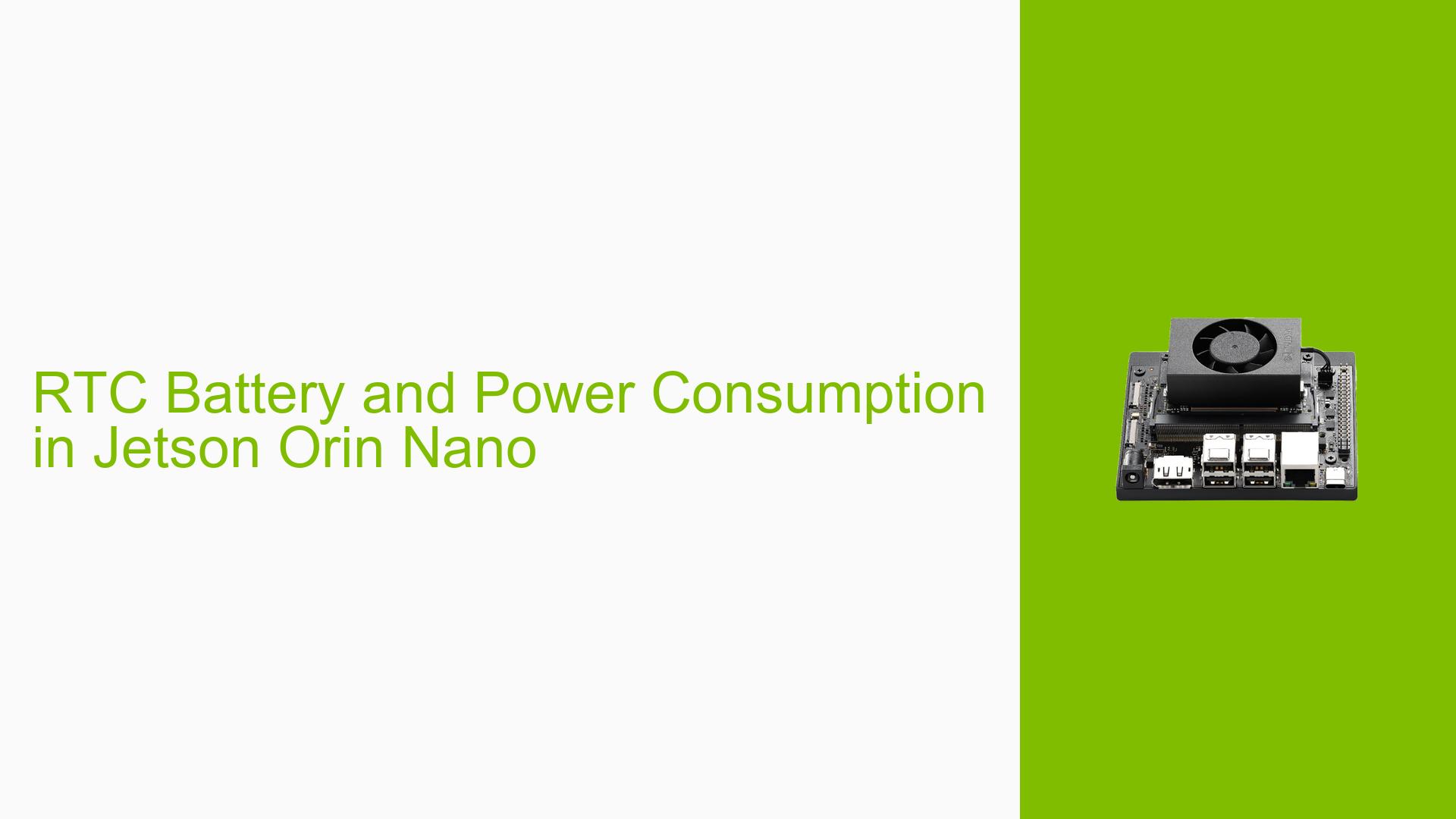RTC Battery and Power Consumption in Jetson Orin Nano
Issue Overview
The discussion revolves around the power consumption of the Real-Time Clock (RTC) circuit in the Nvidia Jetson Orin Nano Dev board, particularly focusing on two main inquiries:
-
Current Consumption: Users are seeking clarification on the expected current consumption of the RTC when operating on battery backup. The responses indicate that the current consumption ranges from 12 to 50μA, as updated in the latest datasheet.
-
Supercapacitor Usage: There is a concern regarding the use of a supercapacitor for RTC power. The official documentation states that a supercapacitor cannot be used because the PMIC_BBAT pin does not support charging. However, users are questioning whether it is feasible to utilize a supercapacitor if an external charging circuit is included, specifically with a low-leakage diode.
The issue arises during the design phase of a board utilizing the Orin Nano, where understanding power consumption and RTC functionality is crucial for effective implementation. The frequency of this inquiry suggests that it is a common point of confusion among developers working with this hardware.
Possible Causes
-
Documentation Limitations: Users may misinterpret or overlook details in the official documentation regarding RTC power consumption and supercapacitor usage.
-
Hardware Specifications: The current consumption figures may vary based on specific configurations or environmental factors, leading to discrepancies in user expectations.
-
User Misconfiguration: If users attempt to implement supercapacitors without proper understanding or additional circuitry, they may encounter issues related to power supply stability.
Troubleshooting Steps, Solutions & Fixes
-
Verify Current Consumption:
- Check the latest datasheet for updated specifications on RTC current consumption.
- Confirm that your design maintains supply voltage levels within the specified range (12 to 50μA).
-
Assess Supercapacitor Viability:
- Review the PMIC_BBAT pin specifications to understand its limitations regarding charging.
- If considering a supercapacitor, design an external charging circuit using a low-leakage diode to prevent backflow and ensure proper charging.
-
Testing Configurations:
- Experiment with different capacitor types (e.g., electrolytic vs. supercapacitors) while monitoring current draw.
- Use multimeters or oscilloscopes to measure actual current consumption during operation.
-
Documentation Review:
- Regularly consult Nvidia’s official documentation for updates or errata that may clarify RTC operation and power management.
- Engage with community forums for shared experiences and solutions regarding similar issues.
-
Best Practices:
- Design with redundancy in mind; consider implementing both capacitors and batteries for RTC power supply.
- Ensure all components are rated for low leakage to maintain efficiency in battery backup scenarios.
-
Further Investigation:
- If issues persist, consider reaching out to Nvidia support or community forums for additional insights into RTC behavior under various conditions.
- Document any unusual findings or configurations that deviate from expected performance for future reference.
By following these troubleshooting steps and solutions, users can better navigate issues related to RTC battery consumption and supercapacitor integration in their Jetson Orin Nano projects.
